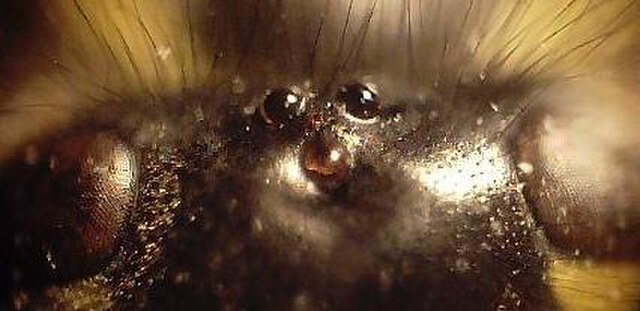Symphylans, also known as garden centipedes or pseudocentipedes, are soil-dwelling arthropods of the class Symphyla in the subphylum Myriapoda. Symphylans resemble centipedes, but are very small, non-venomous, and only distantly related to both centipedes and millipedes. More than 200 species are known worldwide.
Image: Scutigerella 116012425
Image: Garden Centipede Symphyla sp. (8578774949)
Several individuals of Scutigerella sp., showing their small size
Life stages of symphylans: eggs, juvenile, and adult Scutigerella immaculata
Arthropods are invertebrates in the phylum Arthropoda. They possess an exoskeleton with a cuticle made of chitin, often mineralised with calcium carbonate, a body with differentiated (metameric) segments, and paired jointed appendages. In order to keep growing, they must go through stages of moulting, a process by which they shed their exoskeleton to reveal a new one. They are an extremely diverse group, with up to 10 million species.
Protaetia cuprea (copper chafer). Beetles are the most diverse order of arthropods.
Cicada climbing out of its exuviae while attached to tree
Long bristles (setae) of a Tliltocatl albopilosus tarantula
Head of a wasp with three ocelli (center), and compound eyes at the left and right








